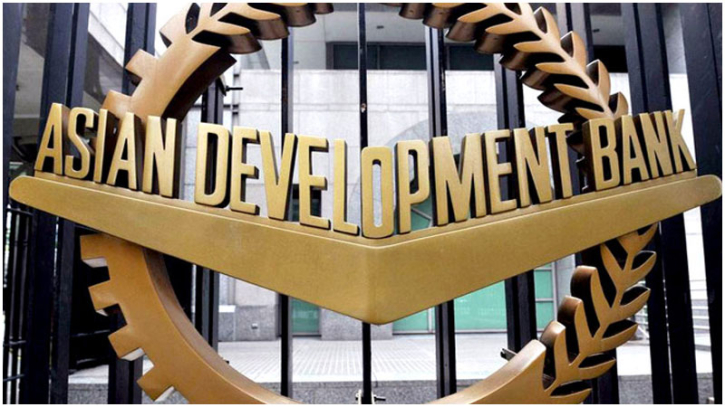ADB cuts Pakistan growth to 2.5%

The Asian Development Bank (ADB) on Wednesday cut Pakistan's economic growth forecast to 2.5 per cent for the ongoing fiscal year, marking the slowest pace in South Asia, and cautioned that any deviation from the hard path of stabilisation could undermine the nascent recovery.
The Mandaluyong based lender also warned that any escalation in political tensions in Pakistan could erode business confidence, potentially hurting investment and growth prospects.
In its flagship biannual report, the Asian Development Outlook (ADO), the Manila-based agency also lowered Pakistan's inflation projection to 6% for this fiscal yearstill the second-highest rate in South Asia after Bangladesh.
The ADB said it finalised the report before new tariffs were announced by President Donald Trump. The World Bank cancelled this week's release of its Pakistan Development Outlook to reassess projections after Trump's announcement.
Trump's "liberation day" unilateral tariffs have triggered global uncertainty, retaliation, and fears about the future of the world economy and trade, according to independent economists and trade experts.
The ADB noted that the Asia-Pacific region "now faces a complex economic landscape, with increasing trade tensions, policy shifts, and geopolitical conflict."
Pakistan's growth is projected to stay at 2.5% in 2025 and rise to 3% in 2026, supported by reforms meant to strengthen private investment.
Just three months ago, the ADB had raised the forecast to 3% for the current year, which it has now cut. The 2.5% growth rate is the lowest in South Asia, even lower than war-torn and sanctions-hit Afghanistan.
Inflation in Pakistan is anticipated to drop to 6% this fiscal year and 5.8% in 2026, reported the lender, adding that the 6% rate still trails only Bangladesh's 10.2% in the region.
The inflation drop is expected to be driven by moderate domestic demand, declining global commodity prices, and a favourable base effect. Core inflation, while easing, remains elevated, it said.
However, inflation may rise in the coming months, partly due to planned reforms in the gas sector, including higher gas prices for captive power plants, which will likely raise input costs for these facilities.
Overall, the inflation outlook remains exposed to risks from volatile global commodity prices, adverse trade policy shifts, energy tariff adjustments, and additional measures to meet revenue targets. The central bank is expected to adopt a cautious approach to easing monetary policy.
Challenges to the outlook
The ADB said Pakistan's outlook faces major downside risks.
"An improved external position and a quicker-than-anticipated drop in inflation could encourage the government to relax macroeconomic policies, possibly triggering a reemergence of balance-of-payment pressures and jeopardising Pakistan's hard-earned macroeconomic stability."
The government also faces internal and private sector pressure to loosen fiscal policies and stimulate growth and jobs.
However, any deviation from fiscal consolidation due to weak revenue or spending pressures could raise debt, increase borrowing costs, crowd out private lending, and destabilise the exchange rate.
"Debt sustainability risks remain pronounced in the Lao PDR, Maldives, Pakistan, and Sri Lanka," the ADB noted.
Policy lapses could threaten disbursements from multilateral and bilateral partners, cutting financial inflows and pressuring the exchange rate.
Recovery in business confidence might also weaken if political tensions rise, limiting investment and consumption and hurting growth. Another risk to Pakistan's outlook is "insufficient rain and the potential for drought," which could damage food security and further suppress growth.
Growth in South Asia has slowed overall, with India's decelerationdue to delays in public investmentoffsetting recoveries in Pakistan and Sri Lanka.
The ADB said that reforms in Pakistan have progressed under the International Monetary Fund (IMF) Extended Fund Facility, launched in October 2024, helping to stabilise the economy. However, the country still faces serious vulnerabilities and structural challenges. The ADB stressed that consistent policy implementation is crucial for resilience and, sustainable and inclusive growth.
Provisional data from the first quarter points to a slow but sustained recovery, with performance in agriculture, industry, and services remaining lukewarm. Fiscal consolidation and weaker farm income, driven by an expected decline in major crop production, will likely constrain activity.
Effective implementation of reforms should foster a more stable environment and gradually remove structural obstacles. Strong remittances, lower inflation, and monetary easing should support private consumption and growth.
Sustaining fiscal consolidation and reducing risks from state-owned enterprises, particularly in the energy sector, are essential.
The current account deficit is expected to remain contained this fiscal year. However, imports are likely to rise in the remaining months, as economic activity picks up, supported by monetary easing and improved macroeconomic stability. This could erase the current account surplus.
Anticipated growth in remittances and expected financial inflows should lift official reserves to $13 billion equal to 2.9 months of import coverby June 2025, predicted the ADB in line with recent statements by Finance Minister Muhammad Aurangzeb.
.png)




